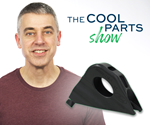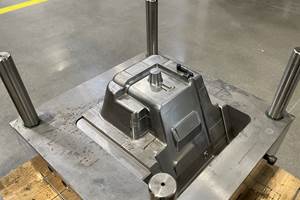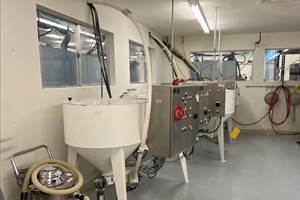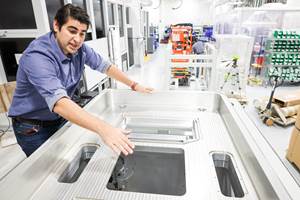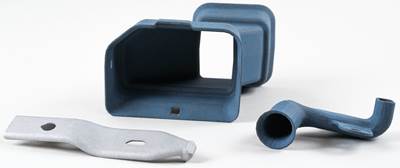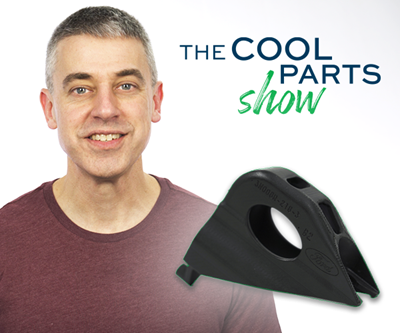3D Printing Allows Special Version of Aston Martin Vanquish
The man who designed the sportscar is making a special limited-edition reimagining of it. 3D printing is playing a role.
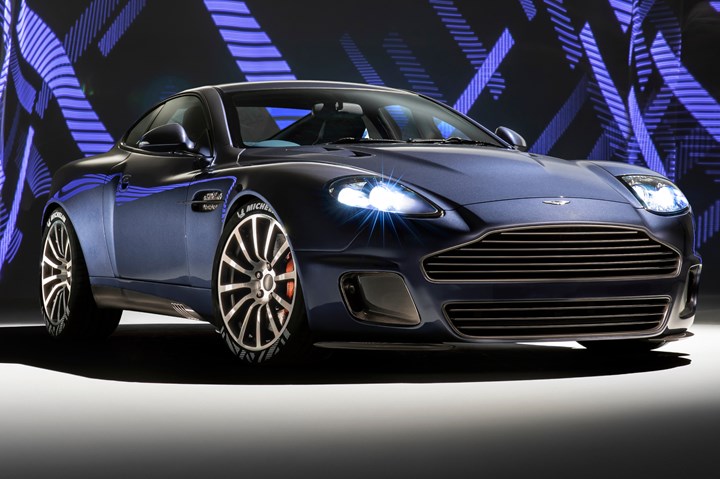
To recreate the Aston Martin Vanquish of 2001 for 2021 the team at CALLUM identified more than 100 areas that could be improved. As there are just 25 of the sportscars being built, additive is being used for tooling as well as for on-vehicle components, such as brake ducts. (Images: CALLUM)
With cars including the Aston Martin Vanquish, Vantage and DB9; and Jaguar F-Type, F-PACE and I-PACE to his credit, Ian Callum is one of the most legendary vehicle designers in the world. In July 2019 Callum and a handful of his colleagues established a design and engineering company based in Warwick, UK, CALLUM. The company is based in a 20,000-square-foot facility equipped with the technology and equipment necessary to provide design, prototyping, machining and trim services. Additive technology is part of the suite.
Upon its launch, the new company went back to one of Ian Callum’s designs, recreating it to become the “Aston Martin CALLUM Vanquish 25 by R-Reforged.”
The “25” goes to the point that the company will make just 25 of these special vehicles. R-Reforged is a Swiss company that specializes in special, limited edition sports car production that has joined this project. CALLUM is deploying a Method X 3D printer from MakerBot in the development and build of the car.
We caught up with Adam Donfrancesco, engineering director at the company, to learn about what it is doing with 3D printing for the special-edition car as well as for other opportunities. Donfrancesco’s experience includes engineering positions at British sportscar specialist Noble Automotive, Aston Martin and, of course, Jaguar.
AM: What parts are going to be printed for the CALLUM Vanquish 25?
Donfrancesco: At present we plan to use 3D printing for a number of production parts. These include the brake ducts to force cooling air to the ceramic brake setup we now have. This was a feature we could incorporate by revising the front bumper. We will use additive manufacturing to create a number of discreet or hidden parts such as switch holders that are used behind the dashboard. Some of these are new components but others are replacements for obsolete components that are no longer available.
Off-car applications excite us and looking forward, we are keen to investigate the feasibility to produce tooling as well as jigs and fixtures using AM technology.
AM: What will those parts be made with?
Donfrancesco: We will be using MakerBot Nylon Carbon Fiber for tooling, and MakerBot ABS and SEBS for other applications, but as part of the partnership [with MakerBot] we want to push the boundaries and experiment with the growing number of materials that are being developed.
AM: Does additive make it easier to execute limited-edition runs?
Donfrancesco: AM makes it easier to create parts without having to invest in tooling so this technology does make it easier for low volume and specialist manufacturers.
AM: Does CALLUM have 3D printers made by other companies? and if so, what are they?
Donfrancesco: We bought our first MakerBot machine when we formed CALLUM 18 months ago. We have done a project looking at the use of ceramic 3D printing with XJet but for production parts, we are using MakerBot. We also outsource manufacturing of Stratasys FDM parts to existing, trusted partners.
AM: What is more valuable to the firm: the ability to create prototypes with 3D printing or the ability to make production parts?
Donfrancesco: For a niche design and manufacturing business, both of these are important. Ian Callum talked considerably about the benefits of being able to create parts and forms that were not previously possible. He has also said it is great to be able to print parts to view and assess them and move away from just seeing them on a screen. We see AM technology benefitting all areas of the business.
Related Content
Daimler, OMIC Evaluate Wire-Fed DED for Moldmaking
3D printing a core and cavity on machine from Gefertec, followed by machining, allowed for a complete mold tool to be produced in three days.
Read MoreA Tour of The Stratasys Direct Manufacturing Facility
The company's Belton manufacturing site in Texas is growing to support its various 3D printing applications for mass production in industries such as automotive and aerospace.
Read MoreWhat Holds AM Back in Automotive Production? GM Additive Lead Describes Advances Needed
“If AM were cheaper, we would be doing more of it,” says GM’s Paul Wolcott. Various important factors relate to cost. However, the driving factor affecting cost is speed.
Read MoreSeurat: Speed Is How AM Competes Against Machining, Casting, Forging
“We don’t ask for DFAM first,” says CEO. A new Boston-area additive manufacturing factory will deliver high-volume metal part production at unit costs beating conventional processes.
Read MoreRead Next
Cadillac Blackwing Models Are First GM Cars Using Additive Manufacturing for Full-Scale Production
Three functional components are 3D printed thanks to cost savings and design freedom. Layers lines on the shift knob signify this advance.
Read More3D Printing for Production at Ford: The Cool Parts Show #7
The parking brake bracket on the Mustang Shelby GT500 is now 3D printed instead of stamped. Learn how Ford is thinking about additive manufacturing in this episode of The Cool Parts Show.
Read MoreAlquist 3D Looks Toward a Carbon-Sequestering Future with 3D Printed Infrastructure
The Colorado startup aims to reduce the carbon footprint of new buildings, homes and city infrastructure with robotic 3D printing and a specialized geopolymer material.
Read More
.jpg;width=70;height=70;mode=crop)

